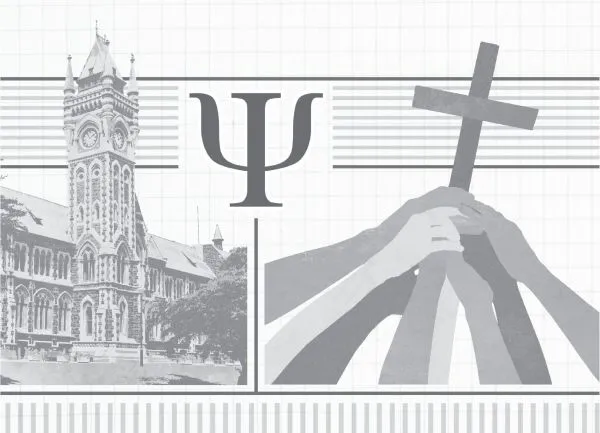![]()
PART 1
MULTICULTURAL PSYCHOLOGY THEORY AND CONCEPTS
![]()
CHAPTER 1
INTRODUCTION TO MULTICULTURAL PSYCHOLOGY
The earth is the Lord’s, and everything in it,
the world, and all who live in it;
for he founded it on the seas
and established it on the waters.
(Ps. 24:1–2 NIV)
This chapter provides an introduction to the psychological study of cultural and multicultural psychology. Readers are familiarized with diversity in the United States, the theory of social constructionism, and the disciplines of cross-cultural, cultural, and multicultural psychology. An introduction to how the tenets of multicultural psychology intersect with Christianity is also provided.
Spotlight on Self-Reflection
When you hear the word multiculturalism, what do you think? When you saw that one of your textbooks for this course was about multicultural psychology and Christianity, what ideas came to mind? When your parents, spouse, or friends saw your reading list for this course, what did they have to say?
As a student reading this text, you bring to this topic your own diverse experiences, worldview, thoughts, feelings, and ideas about culture and diversity. A wide range of perceptions may be triggered by the idea of reading this book and taking this course. What are your thoughts, feelings, concerns, and anticipations about this course and this book? Are you excited? Annoyed? Frustrated? Encouraged? Discouraged? What ideas and thoughts are connected with your feelings?
In some circles, diversity and multiculturalism have become derided terms. In those circles, multiculturalism may be blamed for “the decline” of the culture, educational systems, and economic prosperity in the United States. Some accuse multiculturalism of being a value system that is “anti-American,” and in some circles, diversity values are considered “anti-Christian.” If you have been raised in those social circles, as a Christian student of psychology, a book on faith-integrated multicultural psychology may be potentially problematic. You or your loved ones may be concerned that the authors of this book will attempt to turn you into a “liberal.”
Perhaps you are an ethnic, racial, or cultural minority student at a predominantly White institution (PWI). Your college may be made up of a majority of Euro-American students. You may have spent the last few years feeling as if you were “under the microscope” in classes where you have been the only or one of the only persons of your racial or cultural heritage present. In classes, you may feel that if you venture to speak, your voice will be assumed to represent your entire ethnoracial or ethnocultural group. Your experiences with multiculturalism on campus thus far may have been mostly marginalizing ones where you have felt that, at times, you were reduced to a one-dimensional person, defined solely by your racial or ethnic heritage. You may be worried that stepping into a class that is focused on multiculturalism may exasperate your experience.
You may also be nearing the end of your education at your university, and perhaps your university has spent a great deal of time and energy espousing the values of “Christian multiculturalism.” You may be growing tired of the dialog. You may think that your generation is multicultural and that there is no problem with embracing multiculturalism. You may believe that the fact that faculty so ardently pursues this discourse is more of an indicator of generational differences, that your generation is not “racist,” and that the faculty should move into the 21st century and stop living in the past. Thus, you may think that this book is an artifact of the “old school” and is going to be an exercise in irrelevance.
Maybe you are excited by the prospect of having the opportunity to look at multiculturalism through the lens of psychology and (better yet) through the lens of psychology and Christianity. Perhaps your life experience has been filled with multicultural experiences, and what led you to your field of study was a desire to seek a greater understanding of your observations and experiences. Perhaps you have spent hours in college classes where the theories, concepts, and ideas being discussed seemed inadequate to explain the reality of your own diverse background or irrelevant to your community context. Maybe you have been frustrated by a recurring experience where cultural factors have been ignored in classes or where they have been relegated to a lecture during the last week of class, and now you are looking forward to giving culture your full attention. On the other hand, you may be looking at this book and thinking that a book on multiculturalism and Christianity is fine—if you live in an urban center, but for the majority of students who live in monoracial suburban and rural contexts, multiculturalism is really a nonissue.
Regardless of the perceptual framework with which you are approaching this book, most likely you are about to spend at least three hours a week sitting in a classroom in which issues of diversity are a prominent focus of the course. Your experiences in this class will likely challenge and affirm some of your beliefs and ideas and ignite your passions; and you might well become frustrated. The study of multicultural psychology draws your heart and mind into deliberations with yourself and with those around you. This text is written for the purpose of integrating your Christian faith and worldview with your study of multicultural psychology. It is our hope that in reading this book, you will experience being challenged, affirmed, frustrated, and passionate.
An Introduction to Multicultural Vocabulary
When undertaking the study of multicultural psychology, concerns regarding vocabulary and language emerge (Dunn & Hammer, 2014). Developing an appreciation for the dynamics of diversity (to be discussed in Chapter 4) and the complexities of how they are infused in and perpetuated through vocabulary and language can have the effect of slowing progress toward cultural competence when fear of potential negative outcomes that could result from word choice causes one to shut down. On the other hand, failure to appreciate the power of one’s vocabulary can result in others shutting down in the presence of those who are not sensitive to their use of words. In this text, readers are exposed to the powerful influence that language and vocabulary have over attitudes, interpersonal relationships, and systemic forces. Readers also have the opportunity to reflect on personal patterns of and preferences for language use. However, to begin a conversation about diversity and intersections of diverse cultures, a common vocabulary must be established.
Preferred word choice related to issues of diversity and culture shifts across time (Sue & Sue, 2013). When communicating about groups of people, the dynamics of power (see Chapter 4) influence the common vernacular. In multicultural psychology, special attention is given to reducing power differentials in interpersonal and group dynamics. Therefore, the use of labels that diminish or marginalize groups is discouraged, and when a common categorical label becomes derogatory, it falls out of favor for use.
Woven throughout this book are quotes from historical figures in the fields of multicultural psychology and multicultural ministry. Readers will likely notice antiquated vocabulary in those quotes and may shudder at their use. However, the current vocabulary that is used in the field of multicultural psychology, like historical language, is not without problems—especially when we consider the labels in terms of how they situate people in relationship to power, privilege, inclusion, exclusion, and marginalization. For example, the use of the term majority to refer to the dominant White culture in the United States and the term minority to refer to diverse cultures in the United States that are not considered part of the dominant White culture can be problematic. These labels may reinforce power differentials that sustain dominant power in the hands of the majority and may also marginalize minority groups that perceive the word minority to communicate that they are considered “less than” the other. Likewise, the use of the term people of color to refer to non-White persons can also be problematic, as it can communicate a generalization that minority groups are all the same (grouped together) and can marginalize Euro-Americans who may find the term diminishes their status as diverse persons.
Because the entire current vernacular is potentially problematic, in this text, specific labels are used to identify diverse groups. The choice of labels is based on the current patterns in the multicultural psychology literature (see Leong, Comas-Diaz, Nagayama Hall, McLoyd, & Trimble, 2014; Sue & Sue, 2013). A variety of descriptors are utilized throughout the book in an effort to most accurately describe the groups of people being considered. For example, if discussing an experience of a group of African American students, the group will be identified as African American. However, throughout the book, groups of diverse people are also discussed collectively, and such a level of specificity will not be possible. Some of the categories that are utilized throughout the text are described in Table 1.1.
Table 1.1
Common Vocabulary to Describe People Groups in Multicultural Psychology
| Label | Brief description |
| Majority | Refers to the socially dominant group in a society (in the U.S. social structure, this is generally Euro-Americans) |
| Minority | Refers to ethnoracial and ethnocultural groups that are not considered part of the socially dominant group in a society (in the U.S. social structure, this is a wide range of cultural groups) |
| White or Euro-American | Refers to a broad range of groups whose ancestors emigrated from eastern and western Europe or whose phenotypic presentation is characteristic of the common description of the racial category of “White/non-Hispanic” |
| People of color | Refers to a diverse group of people who do not share in common a single ethnocultural or ethnoracial heritage |
| Marginalized or oppressed | Refers to people who experience interpersonal, social, economic, or political disparities that result in experiences of being separated, treated differently, devalued, or diminished by the socially dominant group |
| Socially dominant | Refers to people who hold the majority of power and privilege to define and direct the socially constructed context and therefore, in social contexts, are considered the “typical” or “baseline normative” group |
| Culturally diverse | Refers to people in a context in which their primary cultural identities are distinctive from those of the socially dominant group |
Spotlight on Self-Reflection
Table 1.1 lists common vocabulary that is used to describe diverse groups in the United States. While it is always best for people to self-identify their own preferred referent labels, when it is not possible to gather that information, the labels in Table 1.1 can be used. In your personal reflection, or in small groups, take a few minutes to consider the labels in the table. Discuss how each label situates people in relationship to power, privilege, inclusion, exclusion, and marginalization. Identify the vernacular labels that are used in society to identify the in-groups to which you belong. How do those labels situate your groups in relation to power, privilege, inclusion, exclusion, and marginalization? Do you notice any patterns in terms of how your labels situate you socially?
Diversity in a Pluralistic United States
Much has been written about the dramatic shift in the U.S. ethnic population (Anderson, 2007; Schlosser, Lyons, Talleyrand, Kim, & Johnson, 2011a). The U.S. population, subsequent to colonization and the formation of the 50 states, has been composed of Euro-American ethnic groups as the dominant, or majority, group, with a smaller presence of other ethnic and racial groups. While the classification systems utilized to identify ethnic groups as minority groups have varied across time and sociopolitical contexts, the ethnic minority groups often were classified in...


